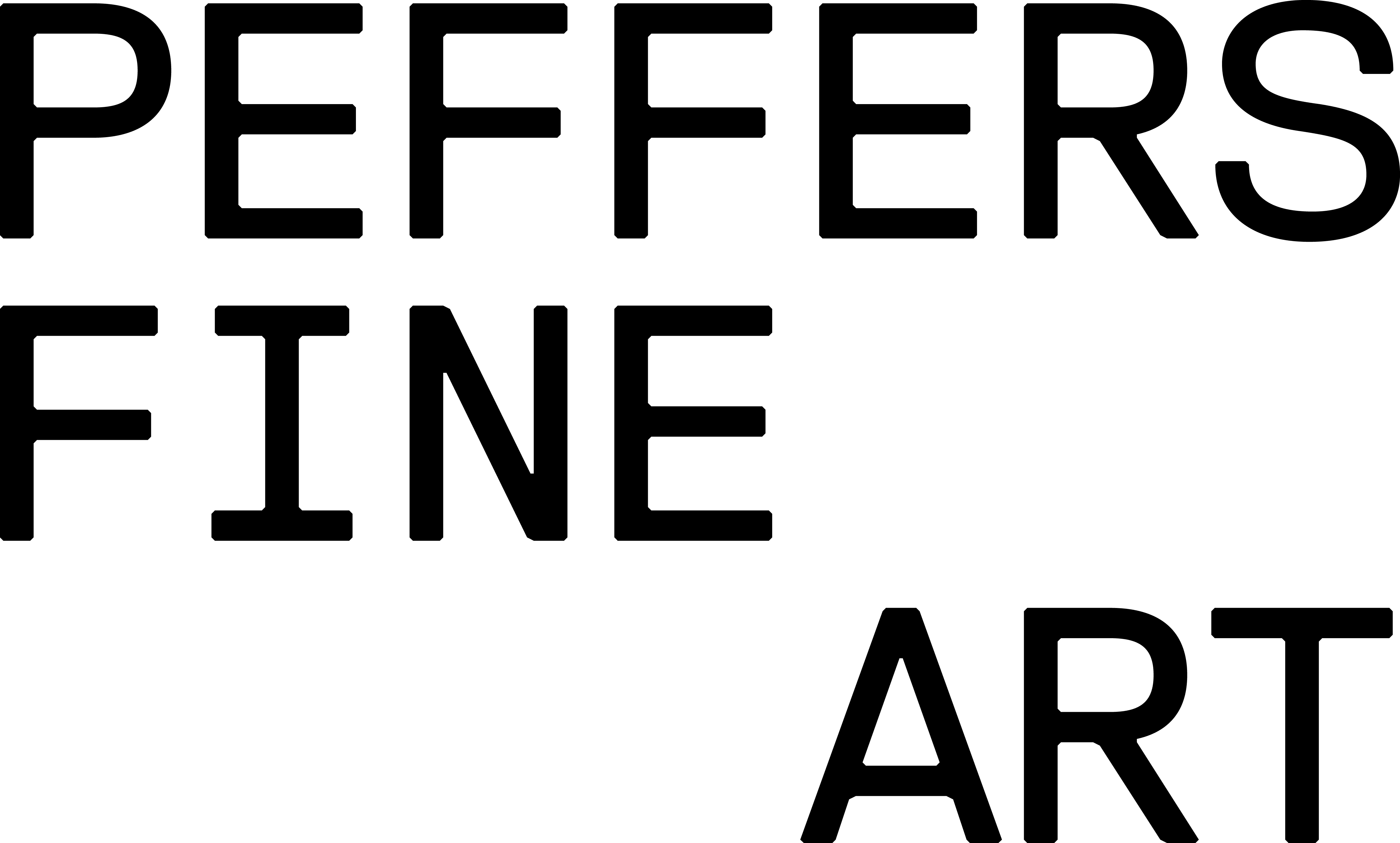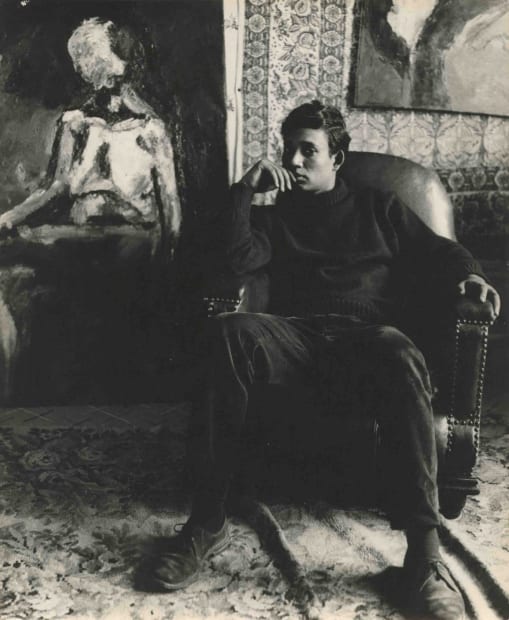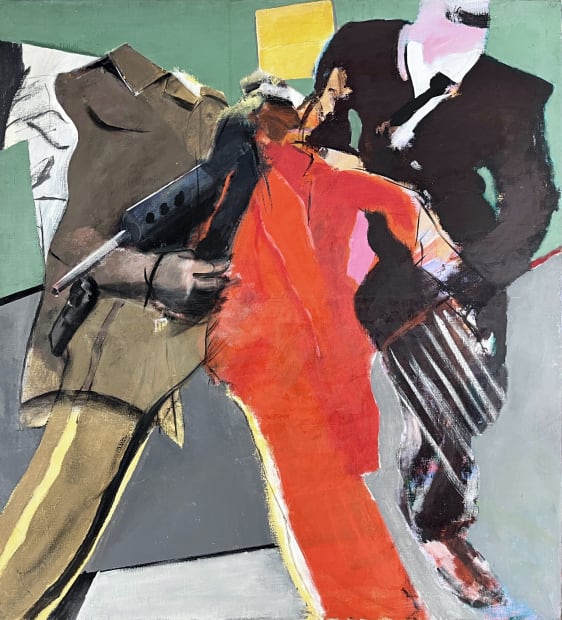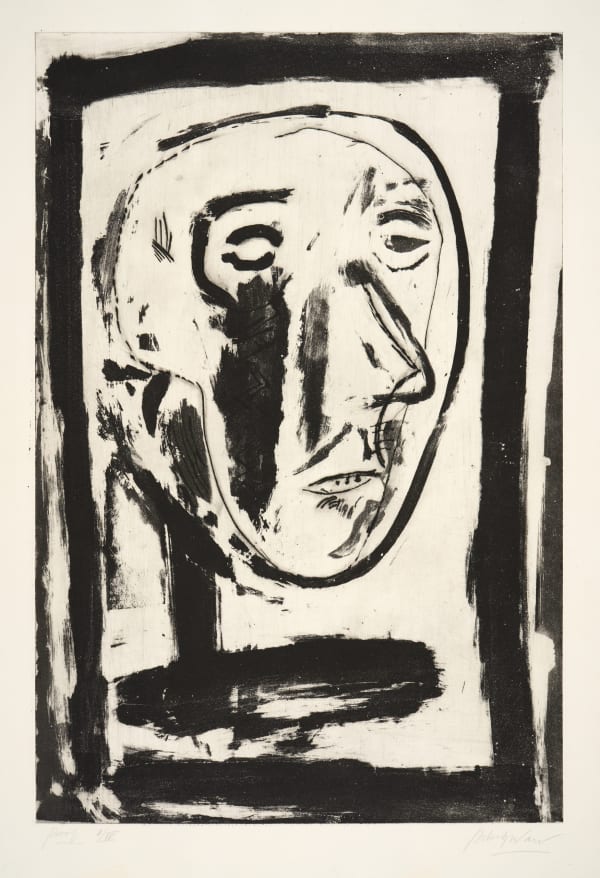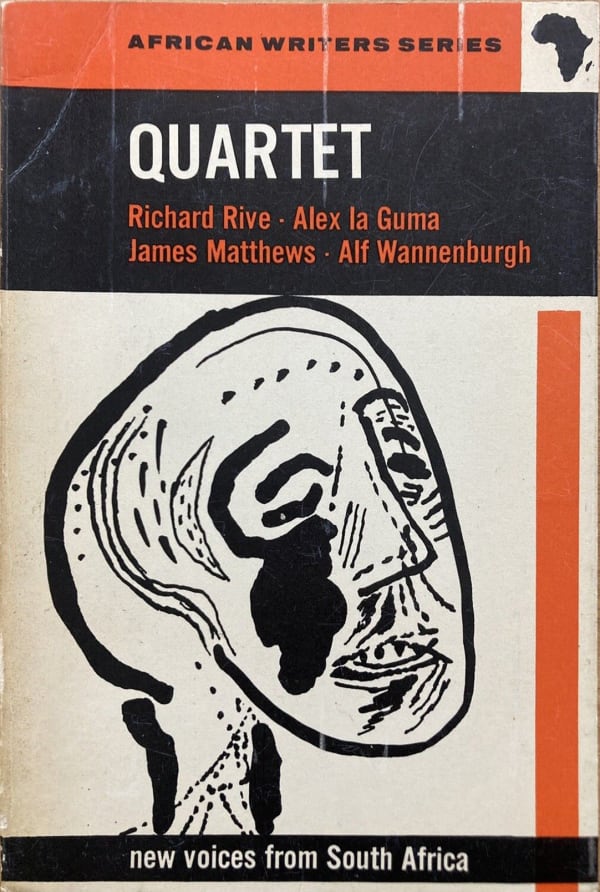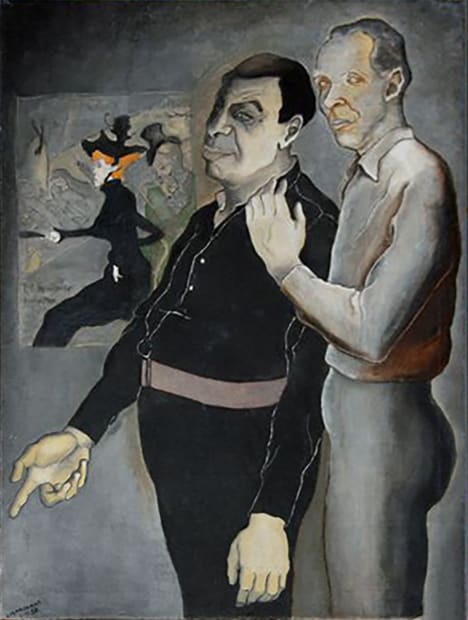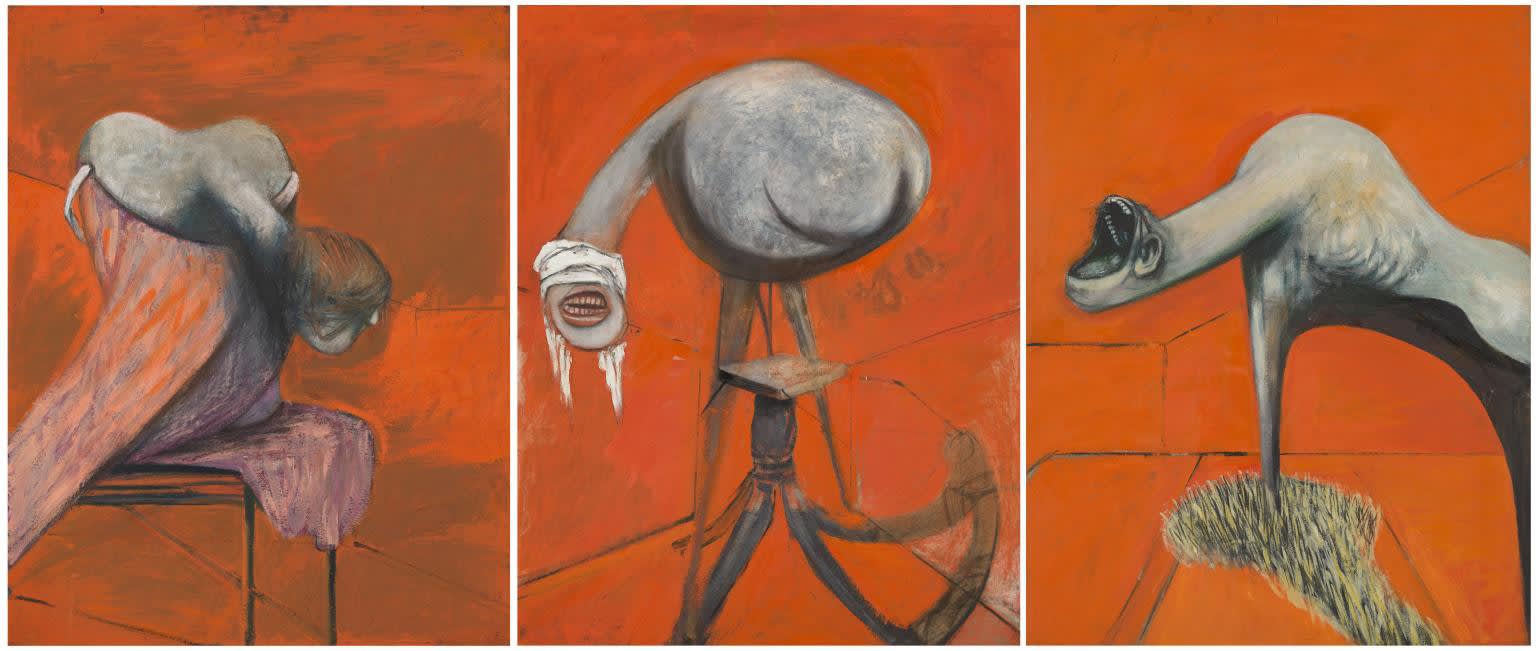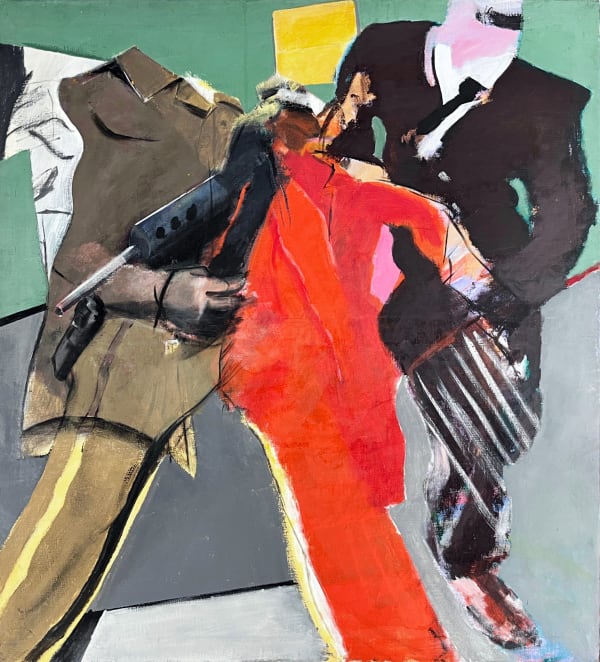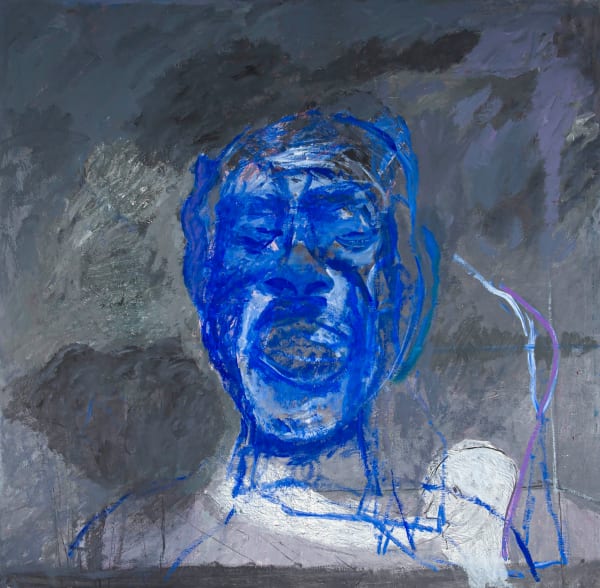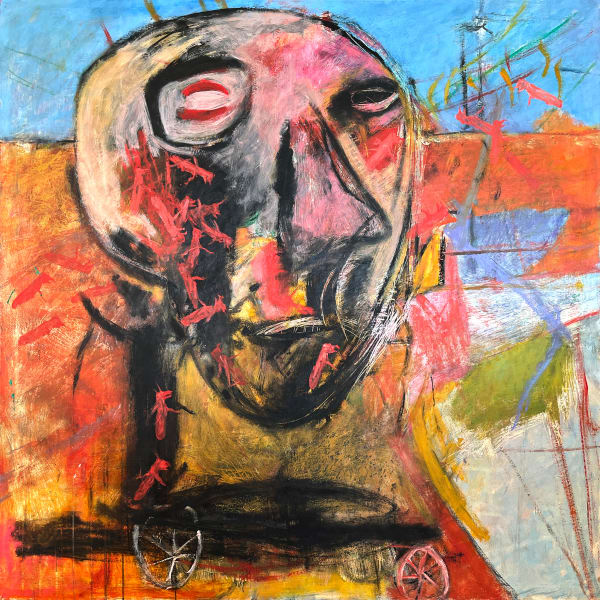Albert Adams: Exile and the Kingdom
-

Albert Adams seated in his London studio c.1960
© The Artist's Estate
-
An Introduction to Three Works
As art historians from Marilyn Martin to Dr. Alice Correia have noted, Albert Adams was a remarkable artist. However, much like Ernest Mancoba, Adams was marginalised, living a life on the edges of the South African and European art establishments. His work, up until his death, in 2006, remained under-researched and under-appreciated both locally and internationally.
However, since 2016, there has been growing interest in his extraordinary oeuvre, both in the UK and South Africa. In particular, recent interest in his work by British-based art historians and curators such as Dr. Alice Correia, Dr. Elena Crippa, Cristine Eyene, and Dr. Greg Salter has contributed to marked growth in the attention and scholarly research. In South Africa too, a growing body of research has been developed by Prof. Bronwyn Law-Viljoen and Elza Miles that adds to the work of Marilyn Martin and Joe Dolby. This suggests a significant shift in Adams’ importance, both locally and internationally. As the head of exhibitions at London’s Whitechapel Gallery (and previously the senior curator at the Tate Modern), Dr. Elena Crippa says, Adams’ work ‘is still very new and very exciting...’
-

Albert Adams, The Captive, 1982
-
 Albert Adams, Celebration Head, 1996
Albert Adams, Celebration Head, 1996 -
-
In her monograph in the artist, An Invincible Spirit: Albert Adams and His Art, art historian Dr Elza Miles states, ‘the Self Portrait (1960), consisting of ovals, ellipses, and vertical rectangles, served as a blueprint for Celebration Head (1996)’. Miles further suggests the wheels that appear at the shoulders intimate another work, simply titled Celebration (2002), depicting a crumpled man on a wheelchair. Celebration Head is certainly another attempt to investigate himself and his elusive identity. As Adams himself would state, he was always seeking to unpick just who he was:
I think identity is something that I find very difficult to pin down — just who I am. I think if you were involved with painting or with any of the arts, then that really becomes crucial, central. And I don’t know if you ever find out who you are. I think that is a theme in my own work. It’s not only, I think, in a national context, but also, of course, in very much more personal context too. The conflicts that arise within one’s own being has to be resolved. And indeed painting, pictures of conflict, resolves one’s own conflicts at times.
Simultaneously exploring the personal as well as the political, Adams produced a lifelong series of self-portraits, considering his own African-Indian heritage and identity. Reading his work today, against the backdrop of post-colonial theory and identity politics, demonstrates how avant-garde his thinking was, and how relevant it is today.
-
'Intersectional tools of understanding gifted to us by Black scholars may also help (re)position Adams through new frames of sexuality, post-colonialism, abolitionism and race.'
- Greg Thorpe
-

Albert Adams, Blue Head, c.1999
-
'Through his training and volition Adams was a modernist and expressionist, but he remained – till the last – spiritually and politically contemporary.'
— Marilyn Martin, former director of the South African National Gallery
-

-
Slade and Kokoschka
While studying at Slade, Adams was tutored by Lucian Freud although, as stated, his most marked influence was Oskar Kokoschka. As Marilyn Martin and Joe Dolby put it:
The time spent with Oskar Kokoschka had an enduring influence on Adams’ philosophical and technical approach to his own creative expression.
Throughout his life, he remained true to Kokoschka’s words, contained in a taped speech, specially recorded for and played at the opening of Adams’ first solo exhibition in Cape Town in 1959: never to close his eyes to ‘the misery we create on earth’.
As Kokoschka said in the same speech, ‘the role of the artist is to see’. And what Adams could see all around him was the misery of South Africa, something he could never stop seeing. -

South Africa 1959
© Johannesburg Art Gallery
-
 Francis Bacon, Three Studies for Figures at the Base of a Crucifix, 1944 © Estate of Francis Bacon
Francis Bacon, Three Studies for Figures at the Base of a Crucifix, 1944 © Estate of Francis Bacon -
 South Africa (Deposition) 1959
South Africa (Deposition) 1959 -
African Modernism & Slade Art College, 1950-1960
-
Between 1953 and 1956 Adams was a student at Slade with some of the most influential African and Asian modernists of the twentieth century. As Dr. Liz Bruchet and Prof. Ming Tiampo state in their exhaustive research into Slade:
The Slade School of Fine Art occupies a complex place in the global history of art education, art practice, empire, and decolonisation. The Slade is both an art school and a department of University College London, an abolitionist institution and the first secular university in England. From its inception in 1871, the Slade accepted students regardless of race, gender, or religion, and trained students from throughout the British Empire and around the world. As such, it was both an institution of imperial education and a contact zone where imperialism and decolonisation existed cheek by jowl, co-constituting the futures of its students, staff, and their networks both in Britain and overseas.
-
In the mid-twentieth century, many future artistic and cultural leaders of the postcolonial world would graduate from the Slade. Adams studied with various other African artists, including the Sudanese painter Ibrahim El-Salahi (b.1930) and the Tanzanian-born artist Sam Joseph Ntiro (1923–1999). He was also there with Egyptian artist Menhat Helmy (1924–2005) and Khalid Iqbal (1929–2014) from Pakistan.
Other artists of significance who also studied with Adams included Portuguese-born artist Paula Rego and British artists Michael Tyzack, Euan Uglow, and Adams’s friend Harold Riley.
Among his most important teachers were William Townsend, Victor Pasmore, Lucian Freud, and Sir William Coldstream.
-

Albert Adams at Slade School of Fine Art - University College London
-
-
Artworks
